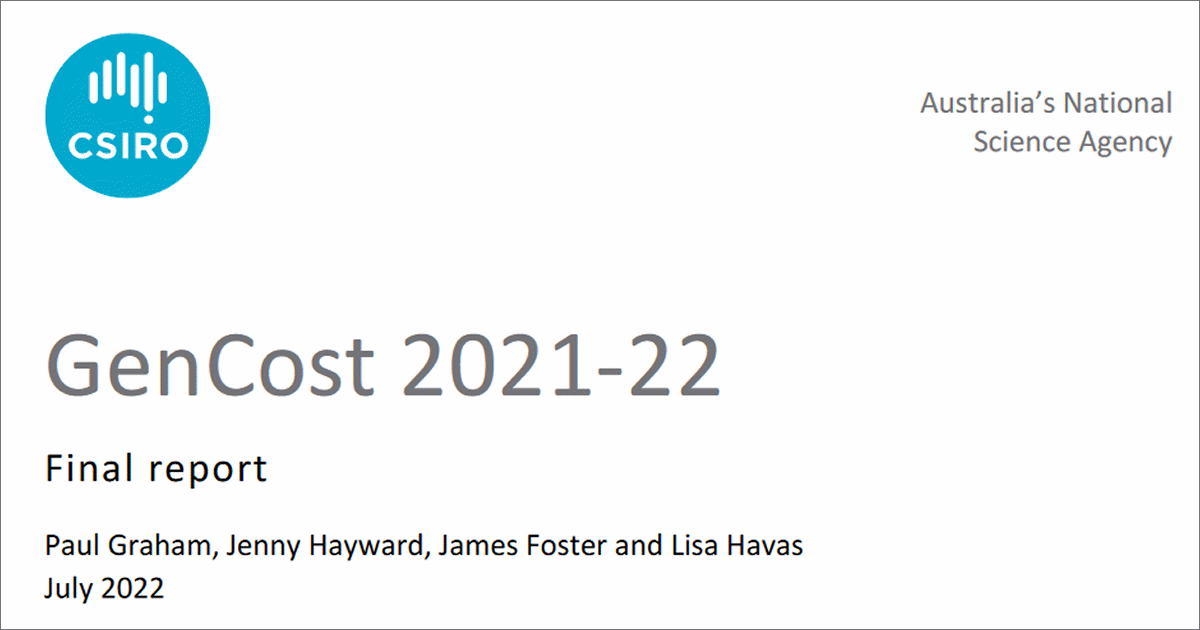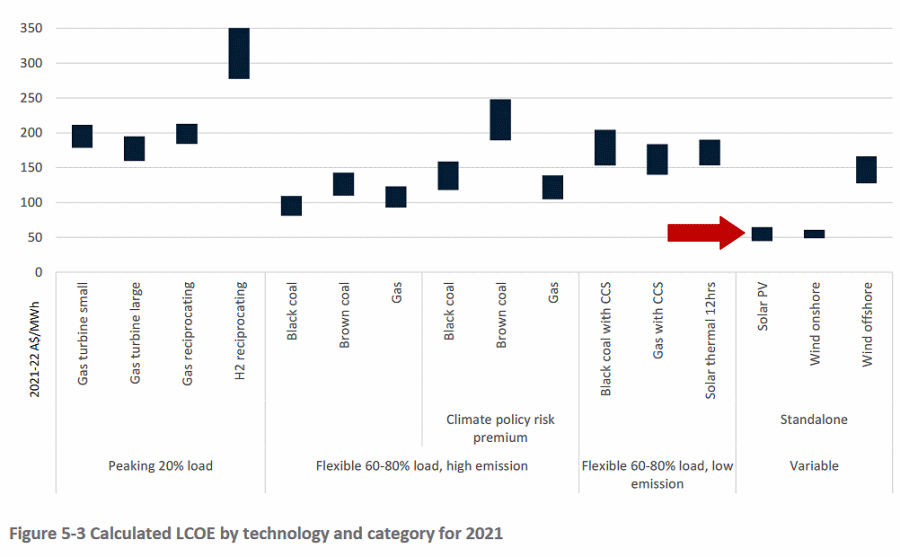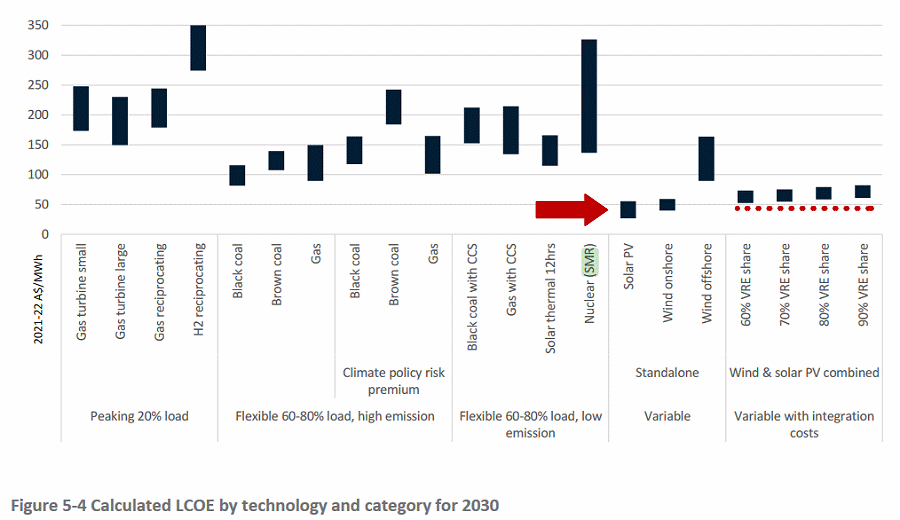
While renewables continue to be the cheapest new-build electricity generation option in Australia (even when including storage), they haven’t been immune to local and global events.
CSIRO and the Australian Energy Market Operator (AEMO) put together a report each year outlining estimated costs of utility scale electricity generation in Australia. The analysis is designed to help decision makers support the decarbonisation of our energy system.
Back in December, CSIRO released the GenCost 2021-22 consultation draft. While a lot has changed globally since then and the final GenCost 2021-22 has needed a few tweaks, this final report indicates renewables have been holding their ground as the lowest cost source of new-build electricity.
Tight global supply chains still recovering from the pandemic and the situation in Ukraine have resulted in cost reductions for various technologies stalling for the next 12 months in the report. But after the current inflationary cycle ends, solar, wind, and batteries are pegged to keep getting cheaper.
“Higher prices have not been observed in this year’s update of current costs which are reflective of past conditions,” states the report. ” However, the costs for projects that will be procured or completed in the coming year will be subject to these current price pressures.”
The GenCost 2021-22 report makes the assumption things get back on more of an even keel in 2023, which may be brave assumption to make.
But in summary for 2021/22:
- Onshore and offshore wind costs have dropped faster than expected.
- Solar and wind continue to be the cheapest sources of electricity for any expected share of renewables in the grid.
- Solar and wind will need additional investments in storage and transmission once variable renewables reach ~50% share of generation.
- Cost reductions for carbon capture and storage (CCS), nuclear Small Modular Reactors (SMRs), solar thermal, and ocean energy are lagging.
Just on SMR tech – the CSIRO and AEMO don’t see any local projects happening this decade “given the technology’s commercial immaturity and high cost”. Well, there’s that and the fact construction and operation of nuclear power stations has been prohibited in Australia since 1998. That could of course change – but even if this unlikely event was to occur soon, SMR *and* conventional nuclear energy is simply too expensive.
Levelised Cost Of Electricity
In terms of 2021, large-scale solar PV led the pack for lowest levelised cost of electricity (LCOE). LCOE is total cost of ownership throughout a power plant’s service life (including the current cost of construction at the time of calculation) divided by energy production. The graph from the GenCost 2021-22 report will be a little hard to read, so I’ve added a red arrow indicating solar PV.
The following graph shows estimated LCOE in 2030. Again, the red arrow indicates solar PV (stand-alone) and the added red dotted line indicates wind and solar combined along with integration costs such as storage in four scenarios – 60% variable renewable energy (VRE) share, 70%, 80% and 90%1 VRE respectively. Side note: where hydrogen sits is interesting.
Commenting on the GenCost 2021-22 report, AEMO’s Merryn York said the analysis shows that timely investment in new, firmed renewables (e.g., backed by energy storage and appropriate transmission support) will provide the best bang for buck in electricity generation moving forward.
“With growing opportunity to decarbonise Australia’s economy, understanding the investments that can support a low emissions power system, provide resilience to international pressures, and reduce consumer costs is critically important to enabling the energy transition,” said Ms. York2.
The final GenCost 2021-22 report can be viewed here.
Footnotes
- CSIRO notes a 100% renewables-based electricity generation system would not be entirely made up of wind and solar but include other renewables such as hydro power. ↩
- I noticed this morning the link to the CSIRO release regarding GenCost 2021-22 was generating a “file not found” error – not sure what the story is there, I’ll update this post once it’s back up again. The link to the full report is working. ↩



 RSS - Posts
RSS - Posts



Speak Your Mind